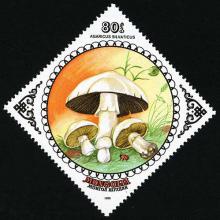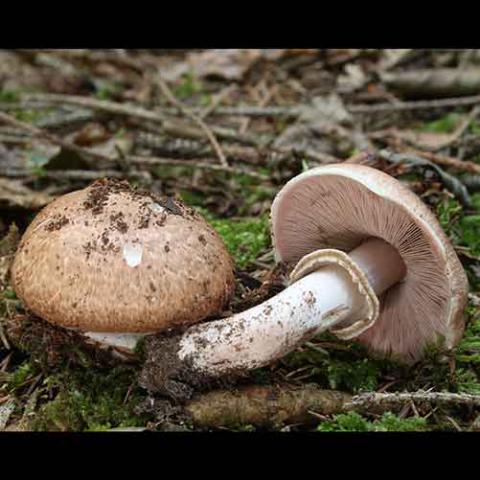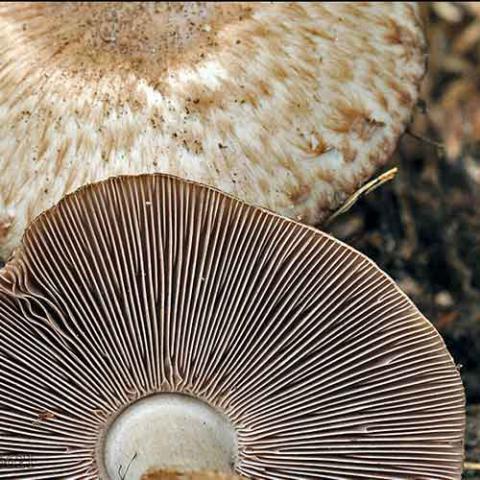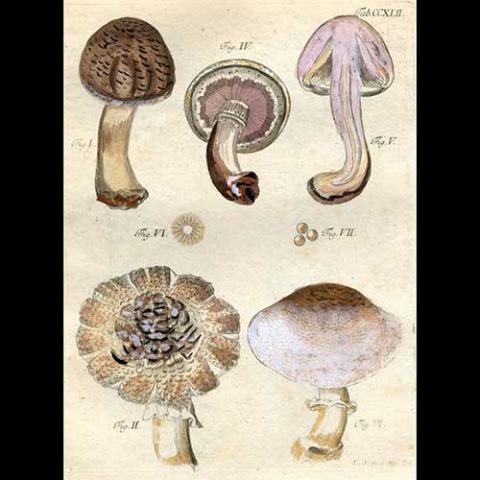NAMES
TAXONOMY
FUNGI ID
THERAPEUTIC
Mongolia
Issued:
Stamp:
Agaricus silvaticus
Bulgaria
Issued:
Stamp:
Agaricus silvaticus
Mongolia
Issued:
Stamp:
Agaricus silvaticus
Bulgaria
Issued:
Stamp:
Agaricus silvaticus
Mongolia
Issued:
Stamp:
Agaricus silvaticus
Bulgaria
Issued:
Stamp:
Agaricus silvaticus
Massiveness of mushrooms in cemetery phenomenal
16-NOV-2016 - Cemeteries are known for the presence of special mushrooms. Still, relatively little is known about fungi from cemeteries. The main cause is of course its function as a cemetery. Everyone should be given the opportunity to visit the grave of a loved one in peace and quiet. Mushroom hunters could cause disturbing commotion.
Cemeteries Management
Last week, a member of the Dutch Mycological Society learned that many mushrooms had emerged from a large cemetery near his hometown. Especially a number of lawns, belonging to a new extension of the cemetery, were full of mushrooms. No burials had yet taken place on this site.
During the visit to the cemetery, there was by no means proper tranquility due to the deafening engine noise of leaf blowers. The maintenance crew was busy clearing and disposing of the graves and lawns. Between the leaves were unfortunately all kinds of fragments of mushrooms that had also been "culled". However, the inappropriately loud engine noise was music to the amateur mycologist's ears. It is precisely the removal of the autumn leaves in order to restore the cemetery to an orderly state, which encourages a deterioration of the soil. Mowing with removal of the grass clippings from the many flowerbeds and verges is also standard practice at this cemetery. The management of this old cemetery has always taken place in the same way.
Little is known about the mushrooms of the cemetery. The cemetery has been known for some time for the occurrence of a special (stinze) flora, but until now little attention has been paid to the mushrooms. In the spring, some parts of the cemetery turn blue from the March violet. The removal of autumn leaves and mowed grass as a management measure in our country mainly takes place in castle gardens, country estates and cemeteries to maintain the park layout. That is why these places belong to the most special mushroom areas in the Netherlands. More information about this matter can be found in the brochure Wegbermen, lanen & parks of the NMV.
Mushroom-rich lawns and flower beds
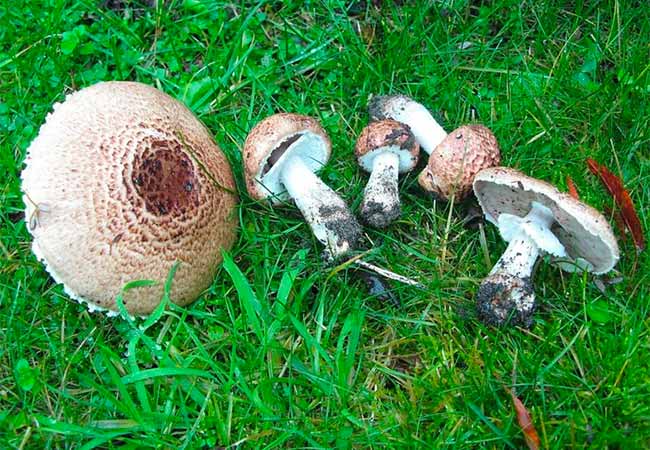
The newly constructed part of the cemetery consists of a number of narrow grass plots with a millimeter lawn, separated by rows of low shrubs. On the lawns were groups of large white mushrooms, consisting of dozens of White mushroom umbrellas ( Leucoagaricus leucothites ). In between were groups of Black-and-white field knight mushrooms ( Melanoleuca polioleuca ), witch circles of the Meadow circle fungus ( Marasmius oreades ) and Poisonous meadow fungus ( Clitocybe rivulosa ). A more focused search yielded many Ocher stropharia ( Stropharia coronilla ) and Dark-stemmed dust balls ( Tulostoma melanocyclum) to light. The Dark-stemmed puffball is actually a kind of the calcareous dunes. The sand needed for the elevated and filled-in new burial site will most likely come from the calcareous dunes. A witch circle of the Flattened Puffball ( Vascellum pratense ) was also found. Almost nobody knows that the Flattened Puffball can occur in witch circles. Most spectacular was the massive appearance of the Stink parasoll (Lepista cristata ) under the bushes of the partitions. The bottom was colored white in large parts from this otherwise common fungus. In between were again groups of Scaly woodland mushrooms ( Agaricus silvaticus). Most species found are not rare, but seeing the massiveness of the different species is a special phenomenon in itself. And all this in the middle of the city.
Genus species (Fungi): Agaricus silvaticus
Agaricus silvaticus (or Agaricus sylvaticus), otherwise known as the scaly wood mushroom, blushing wood mushroom, or pinewood mushroom, is a good edible mushroom, often found in groups in coniferous forests from early summer, or September through to November in Europe, North Africa and North America.
Description
The greyish-brown cap is hemispherical when young, but later flattens out up to 10 cm in diameter. It is covered with broad scales. The gills are grey when young, and become much darker with age. The spores are chocolate brown. The stem is brownish, often with a hanging ring and a small bulb at the base. The flesh is white with a mild taste, turning reddish when cut. The young fruit bodies are well suited for consumption.
Synonym: Psalliota silvatica
Reference: Mycobank.org,verywellhealth.com,WildFoodism.com, Wikipedia
Photo: www.hlasek.com

